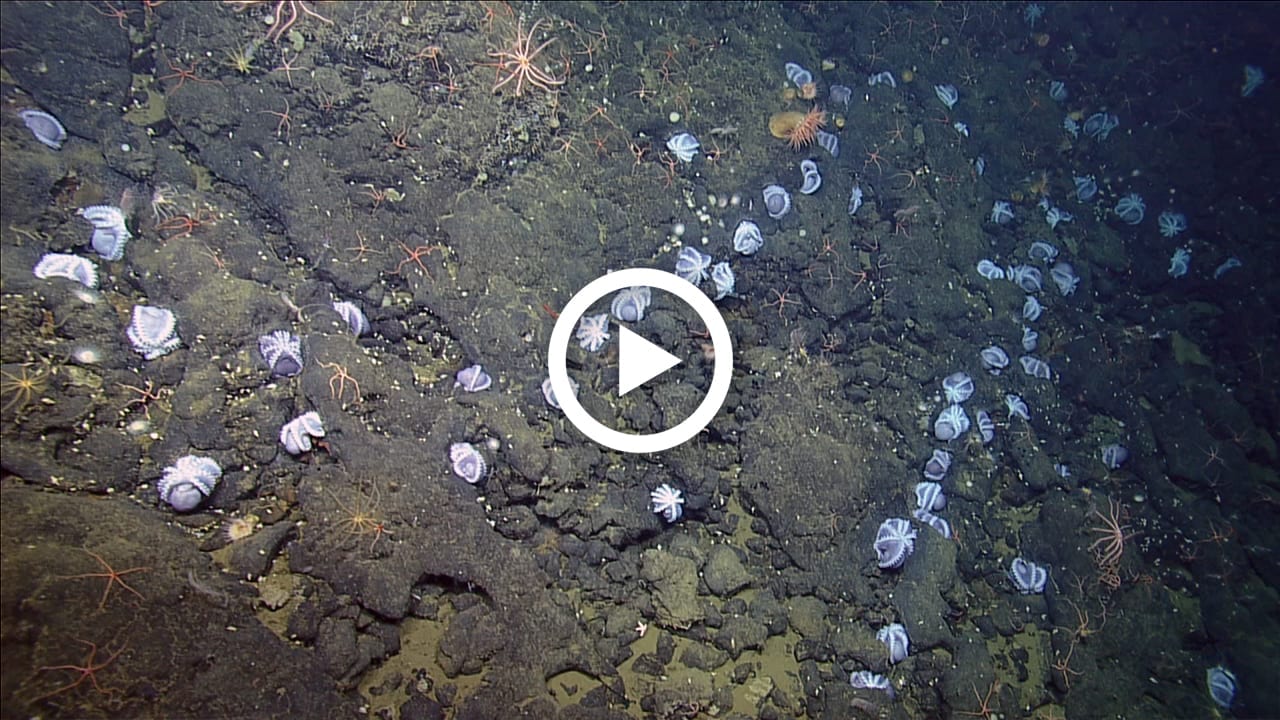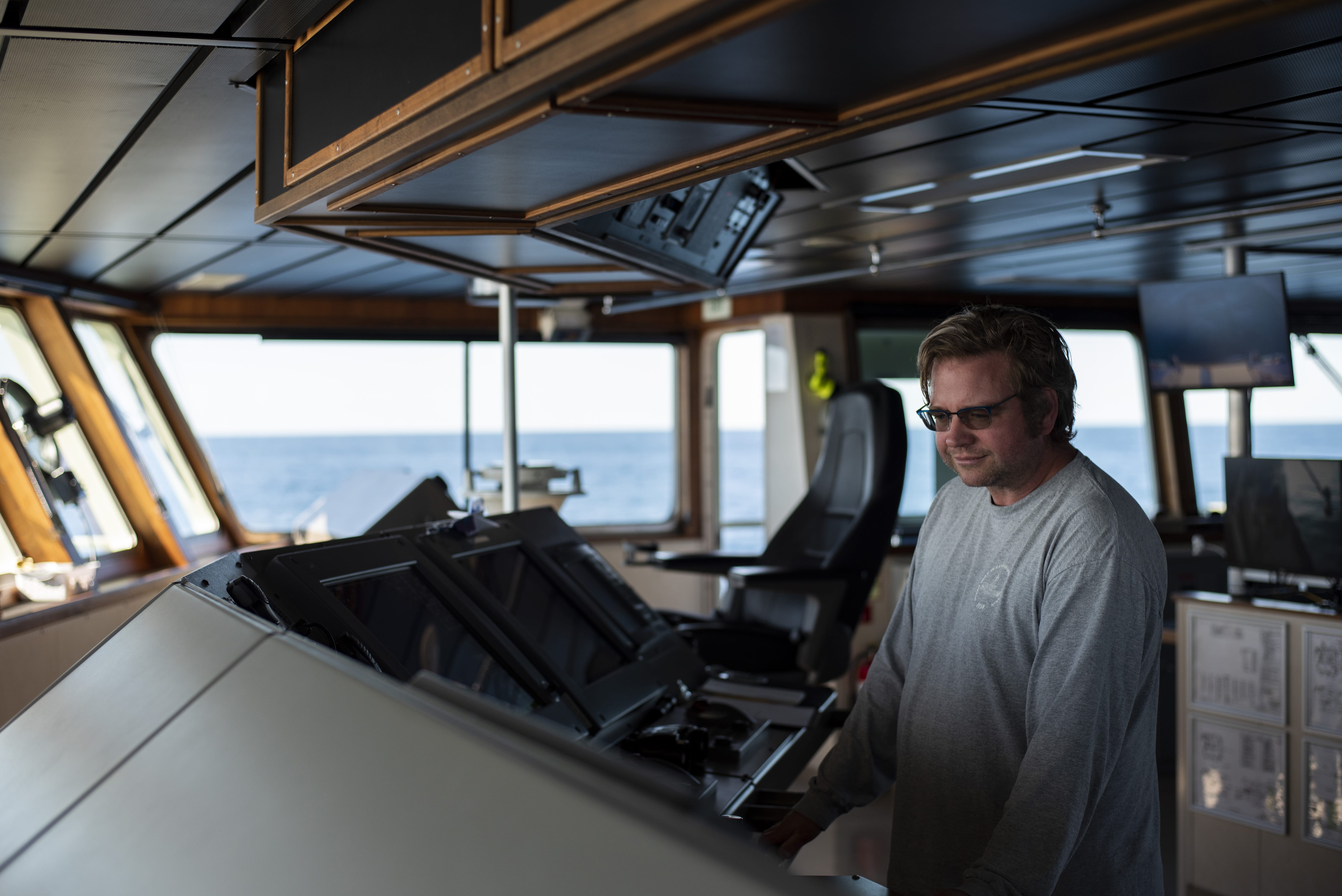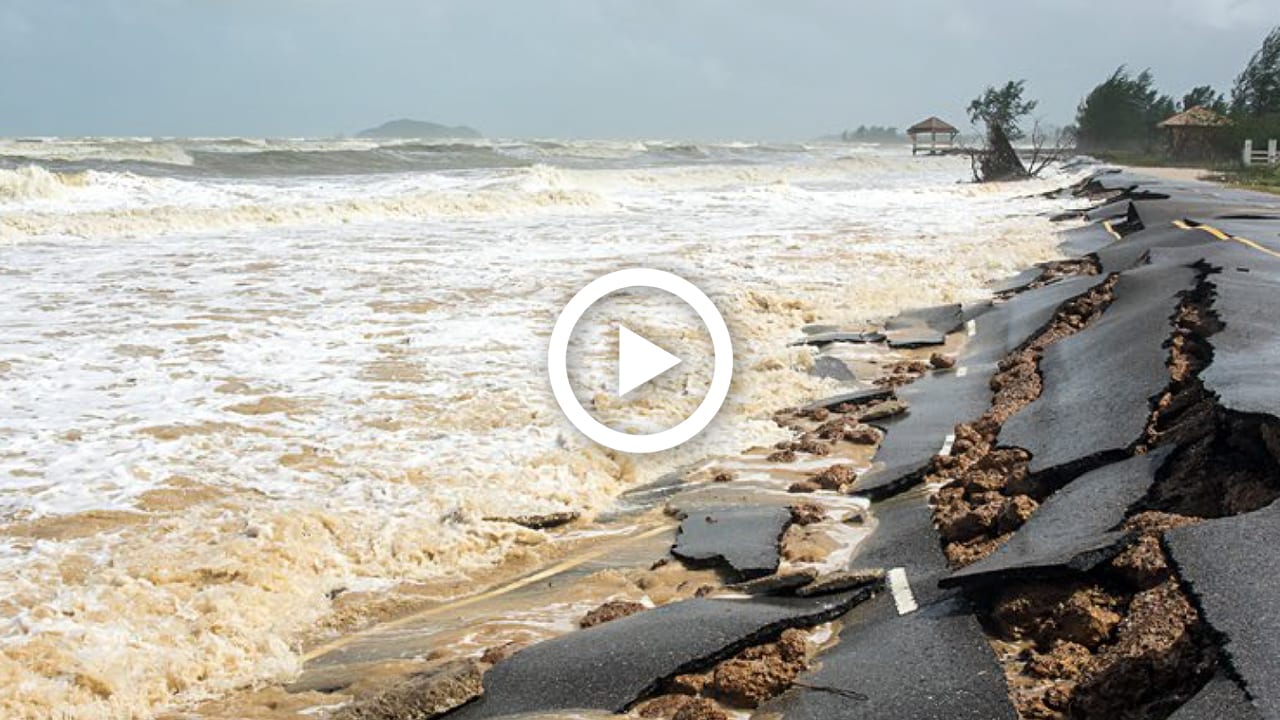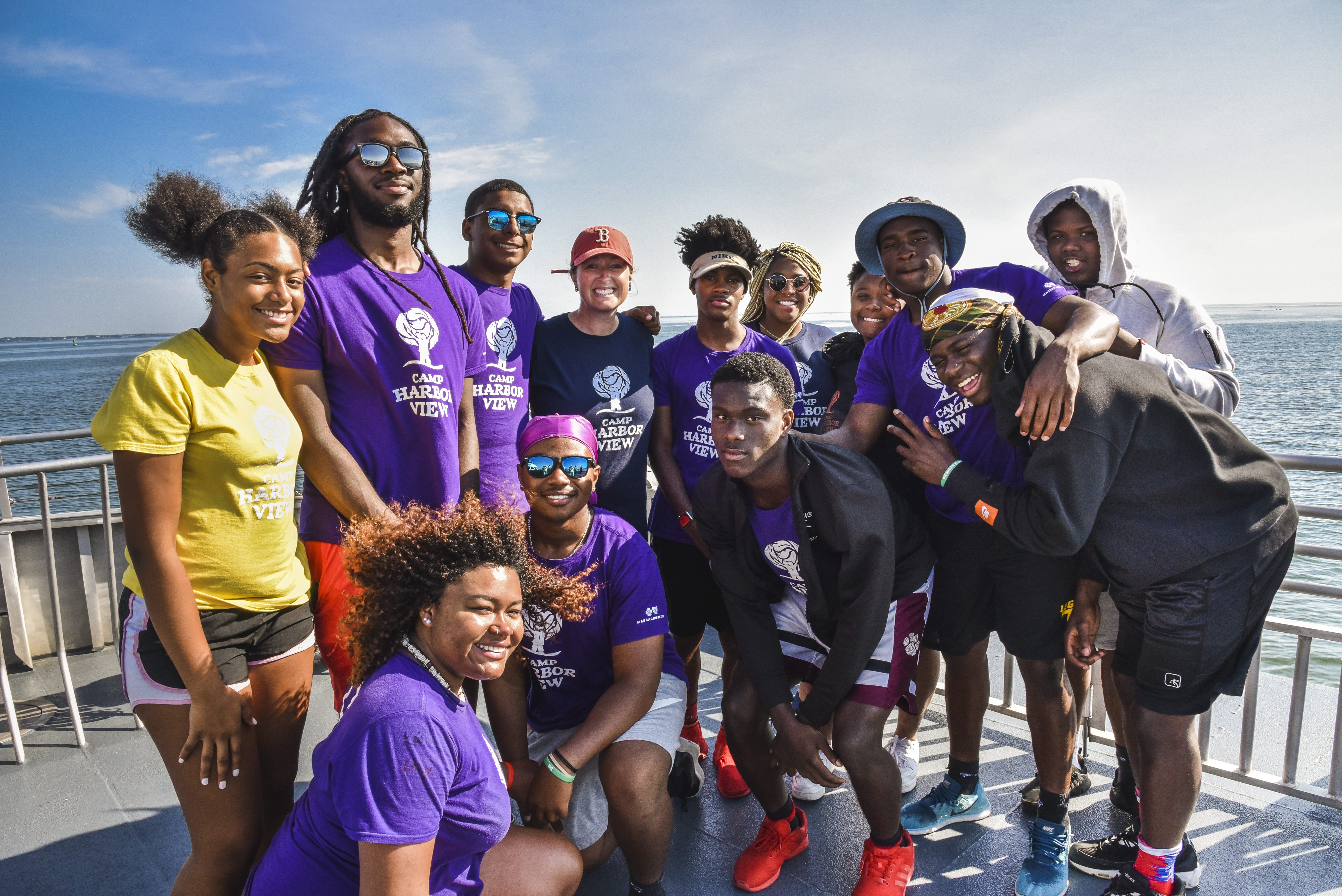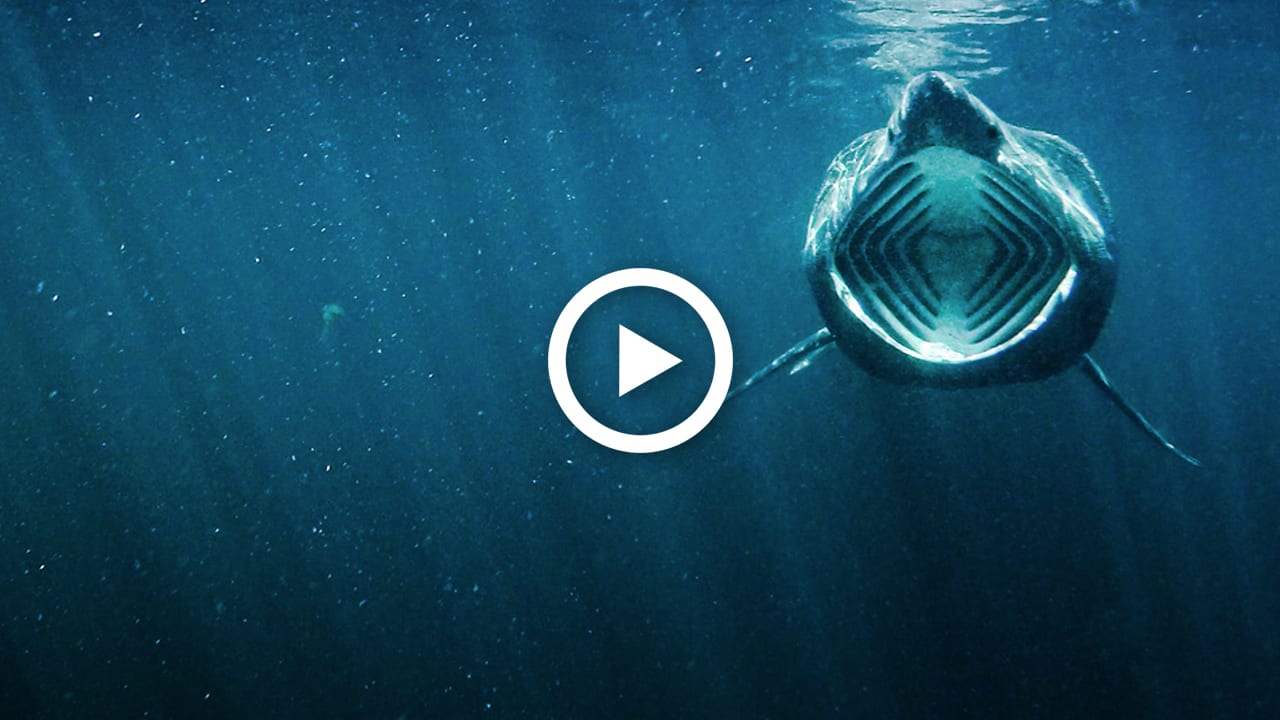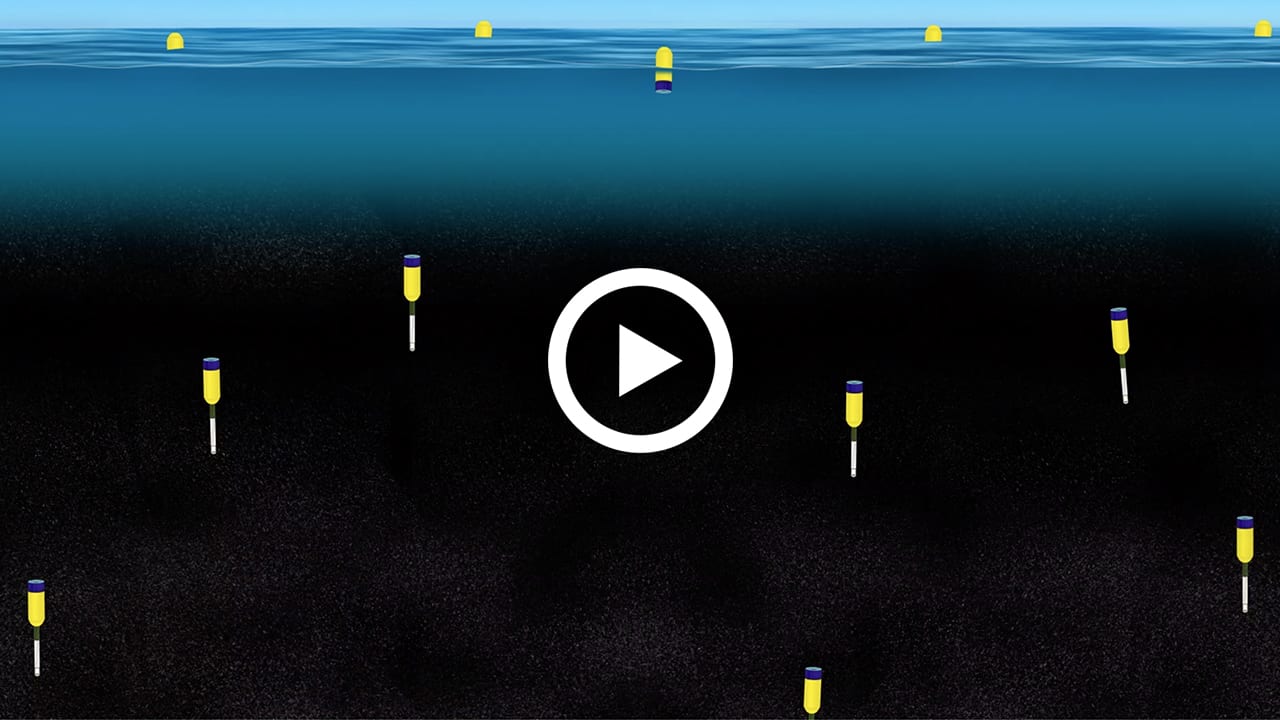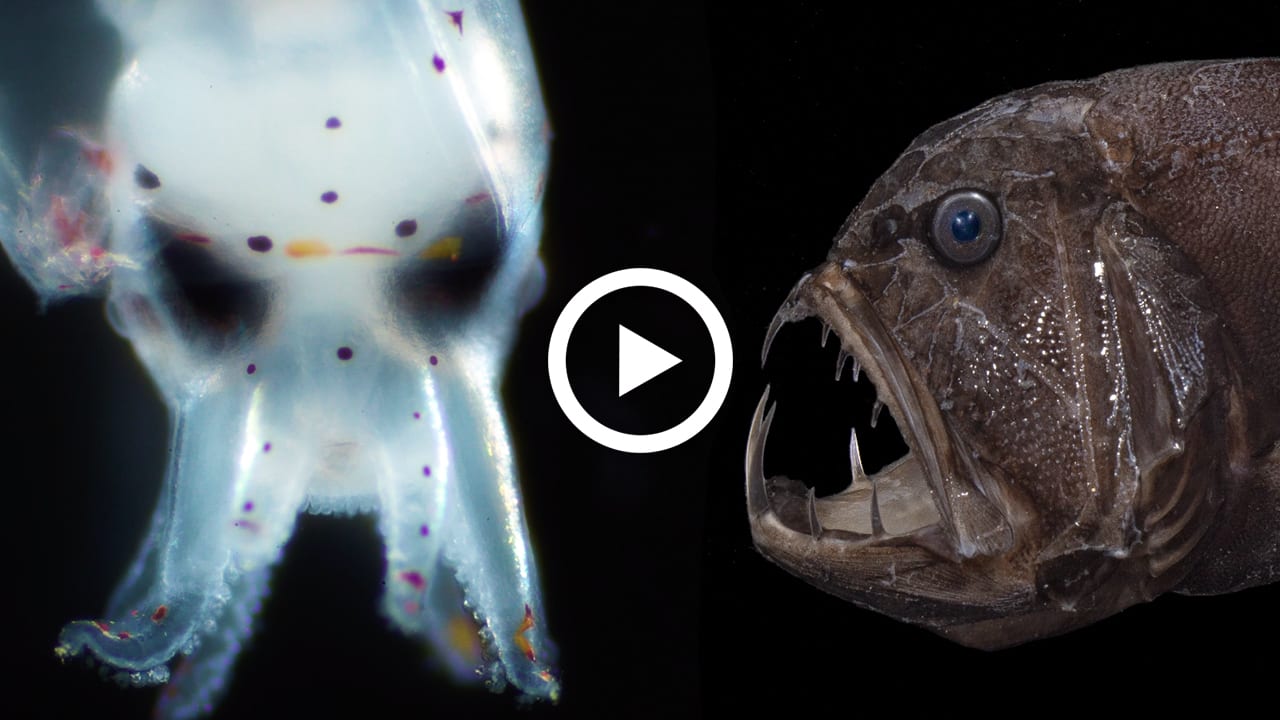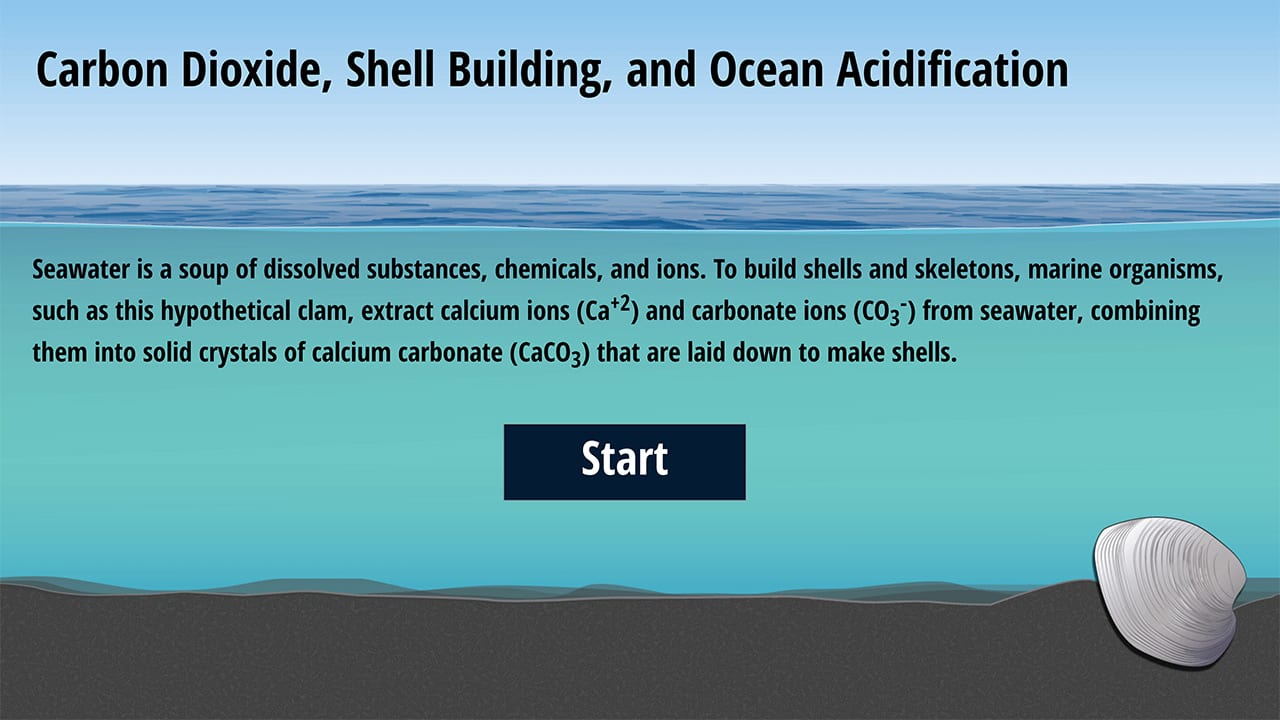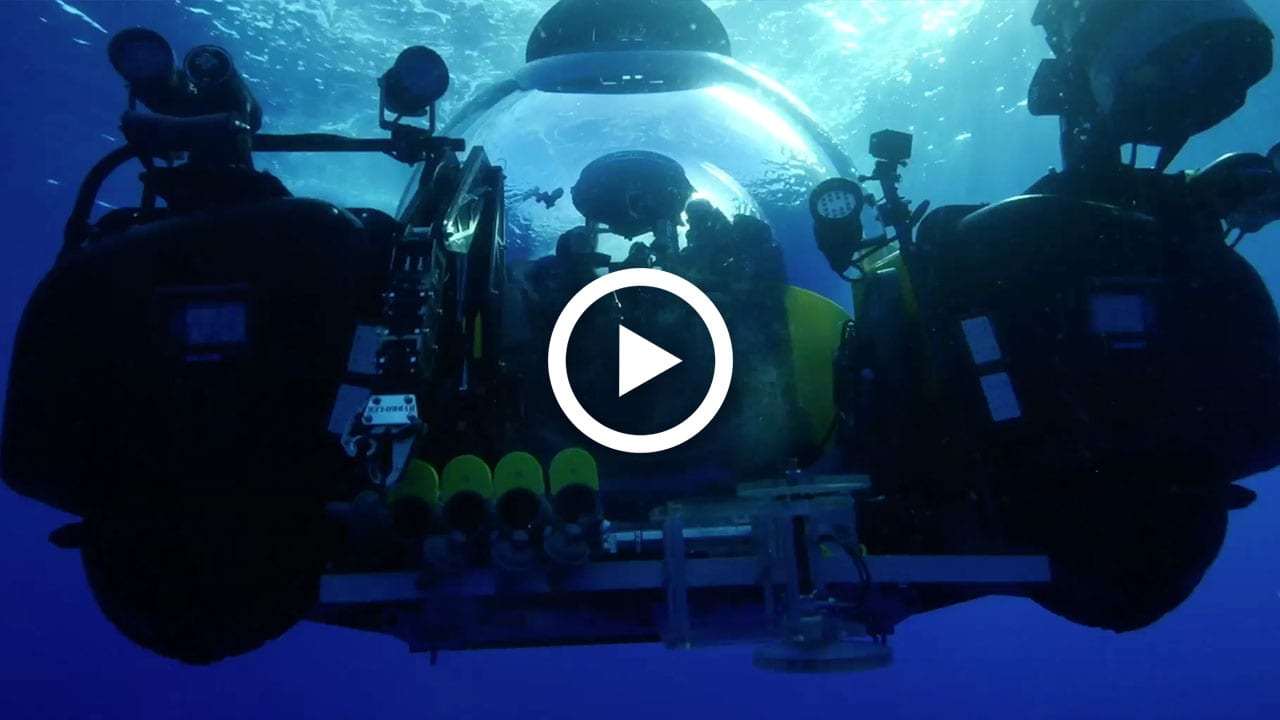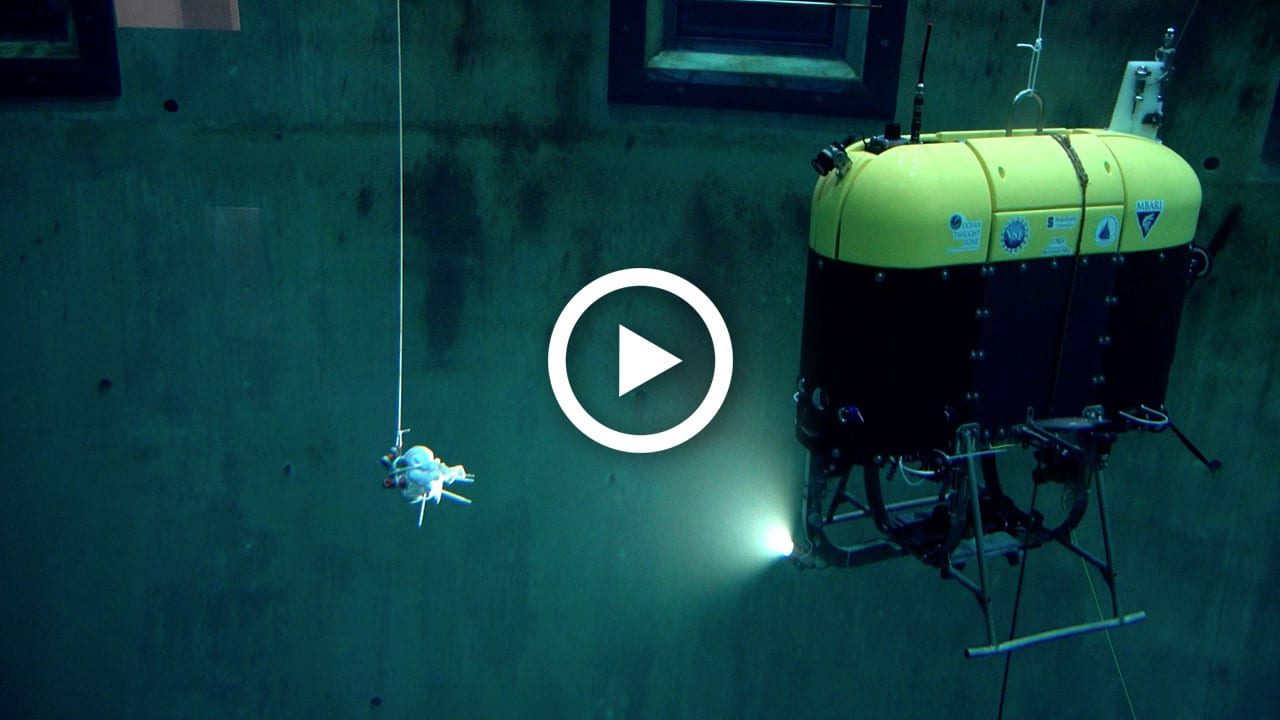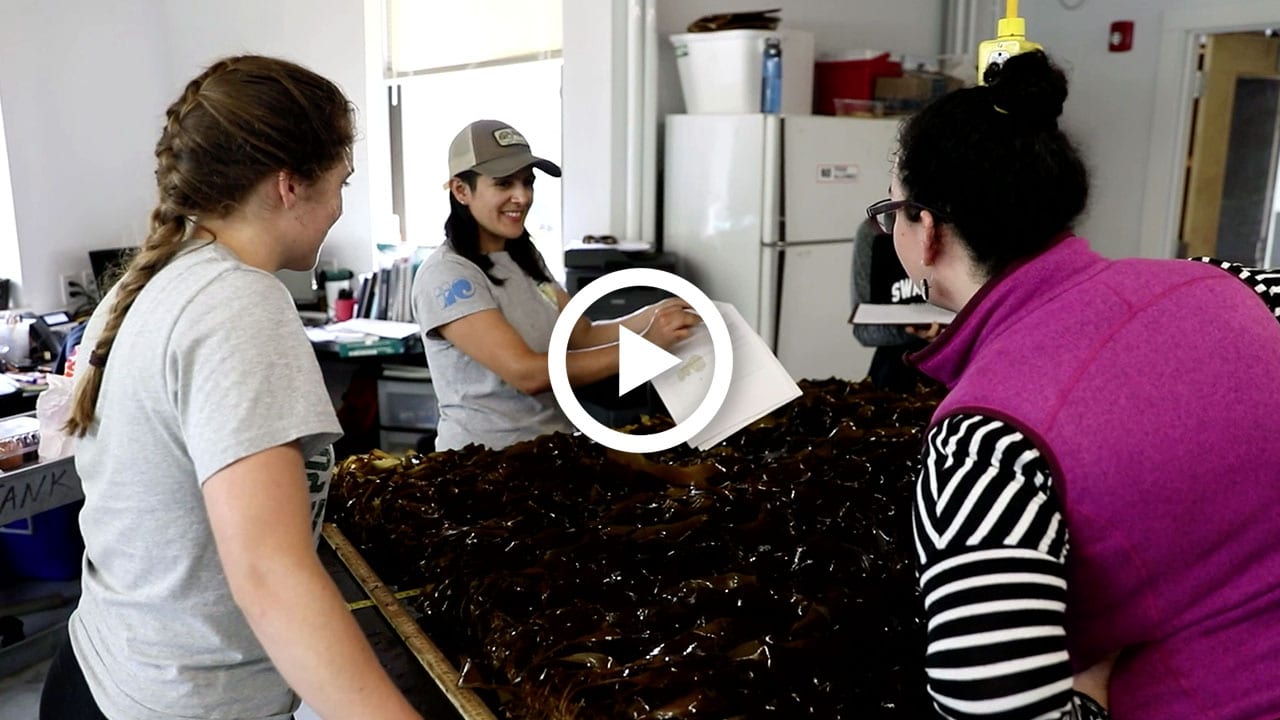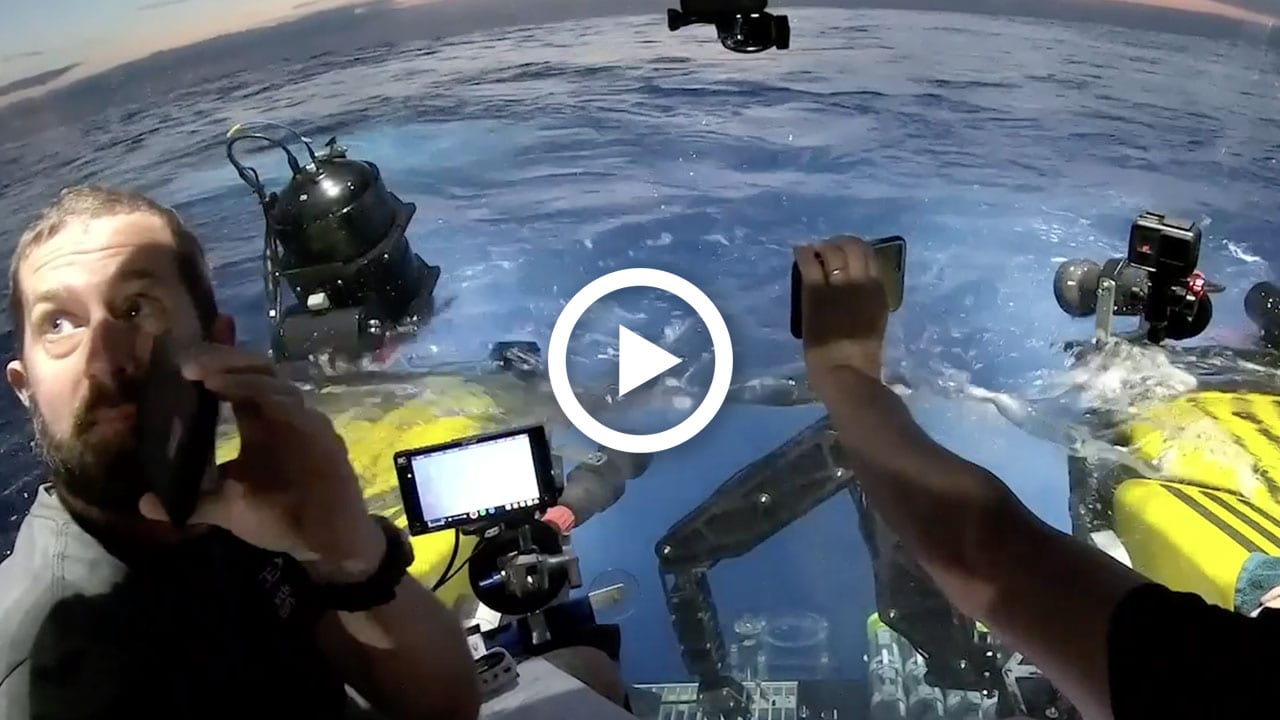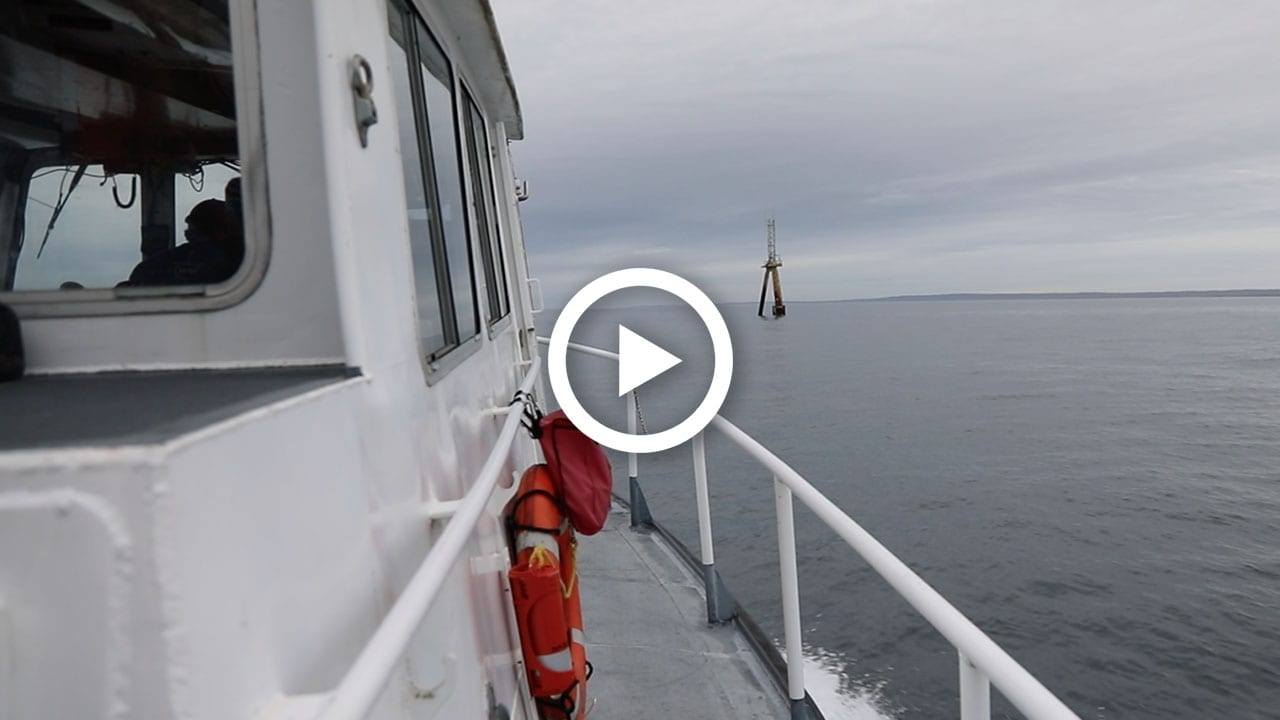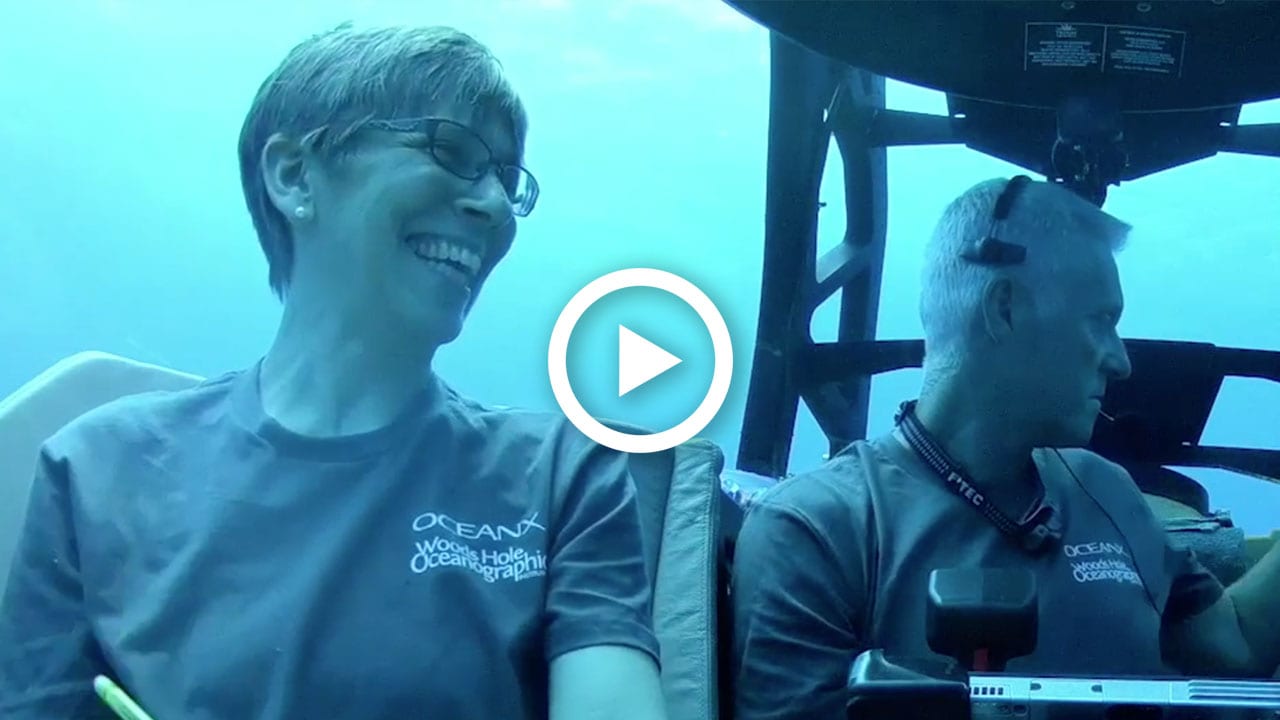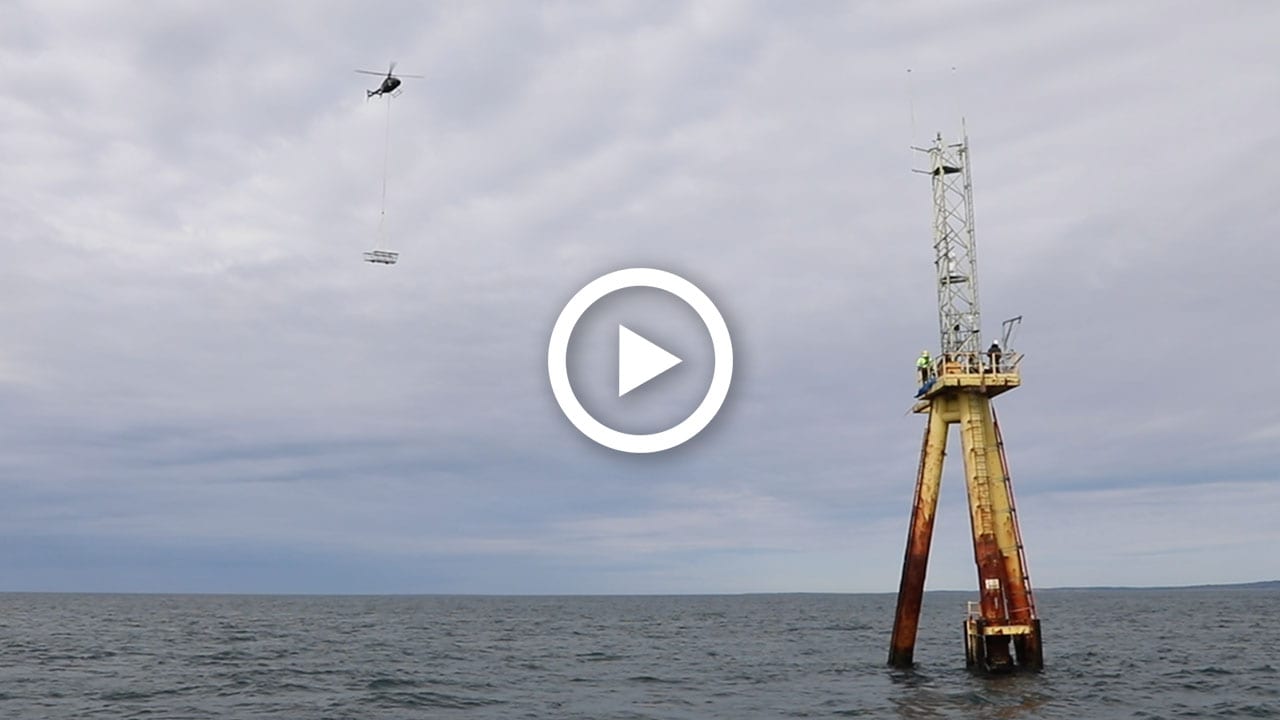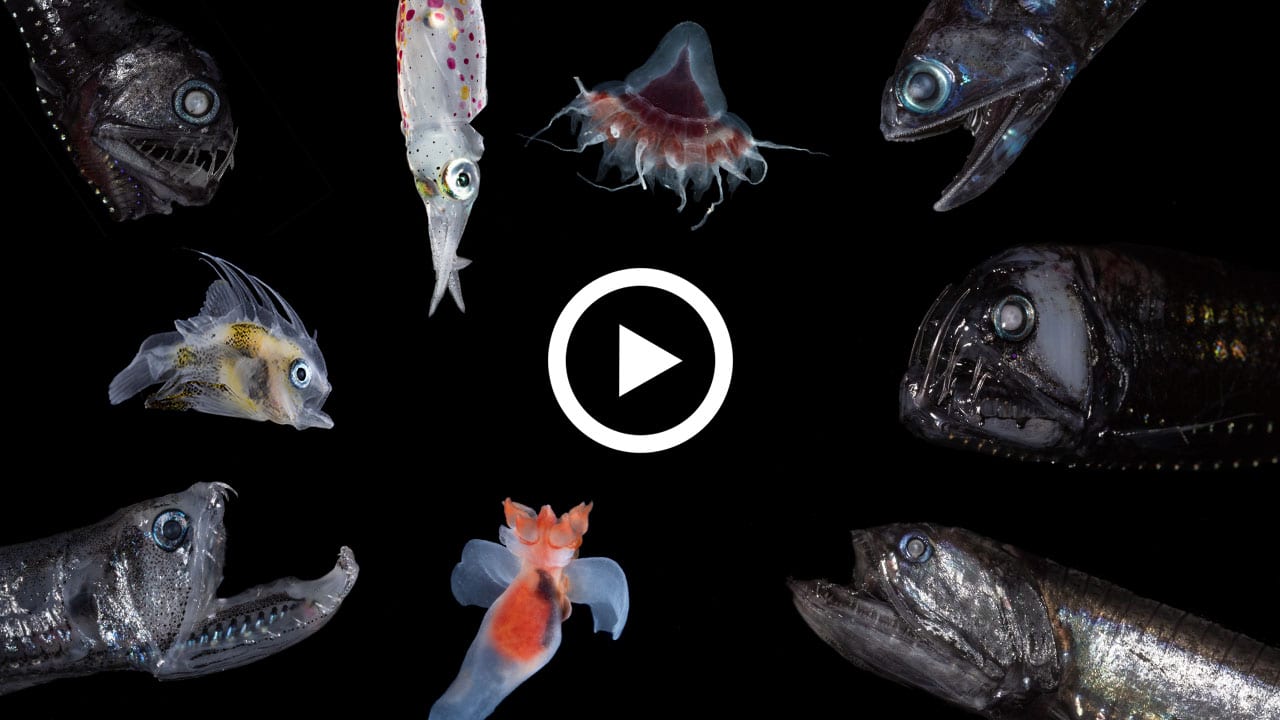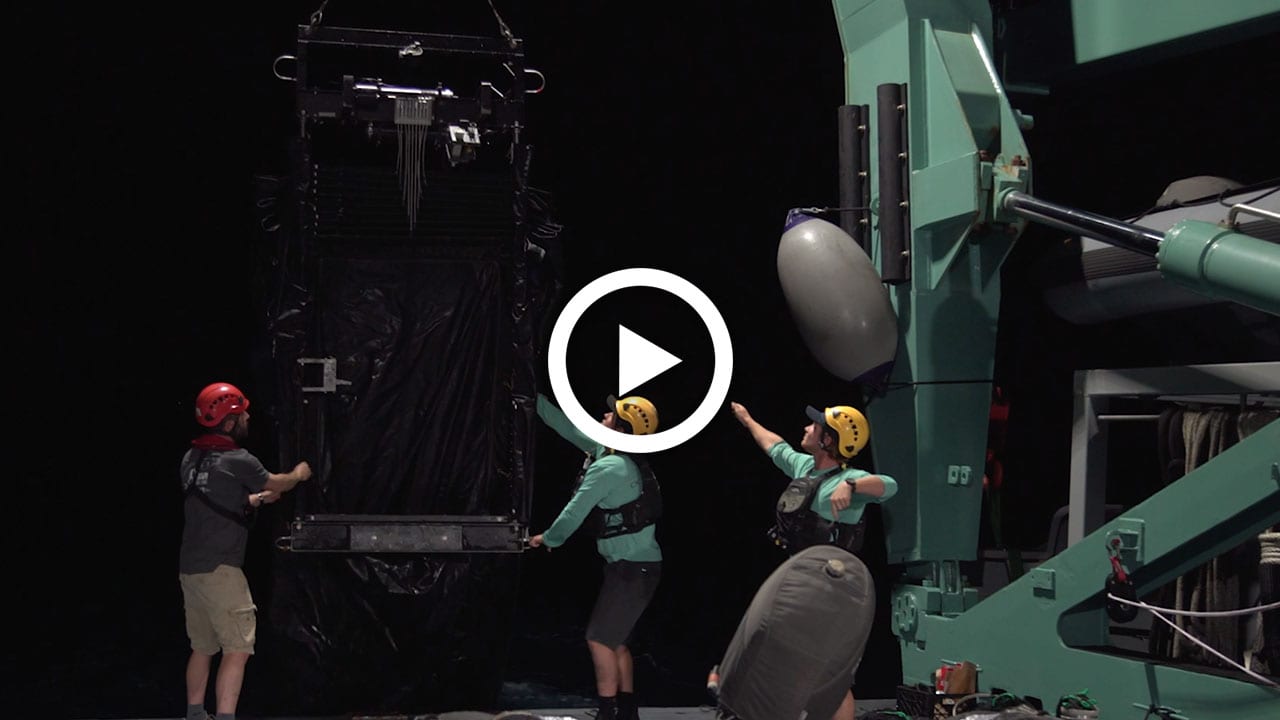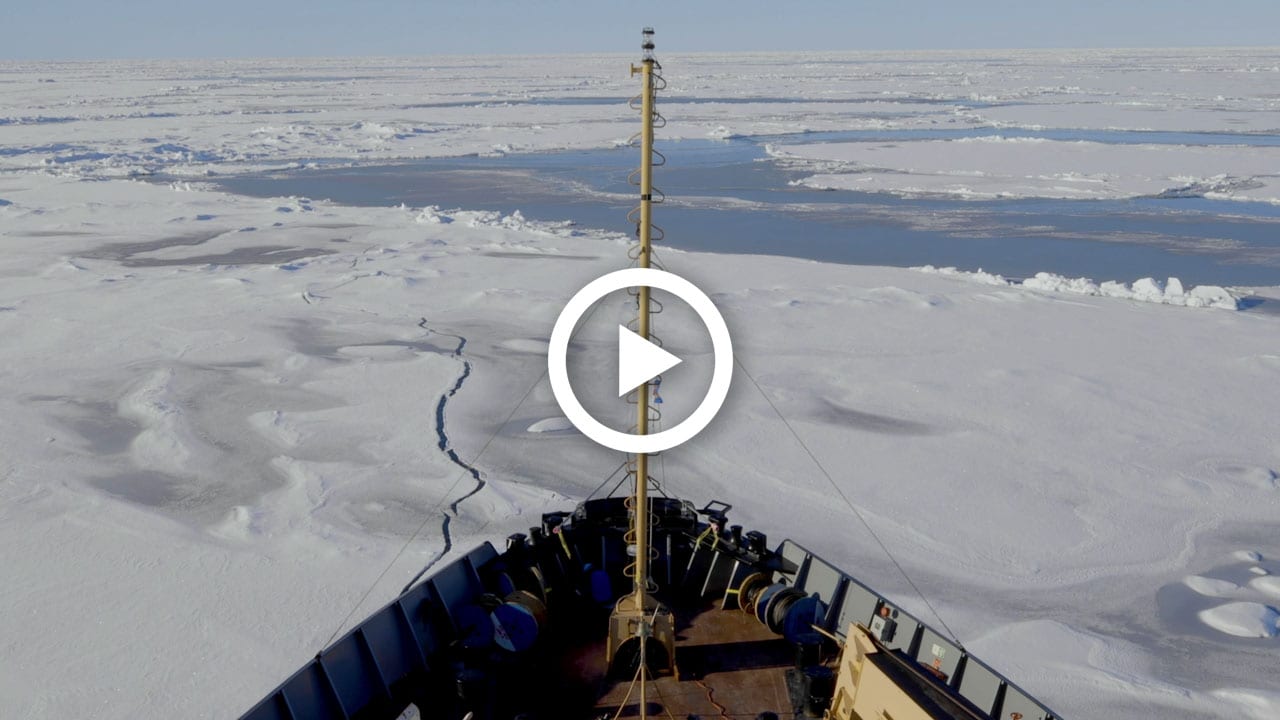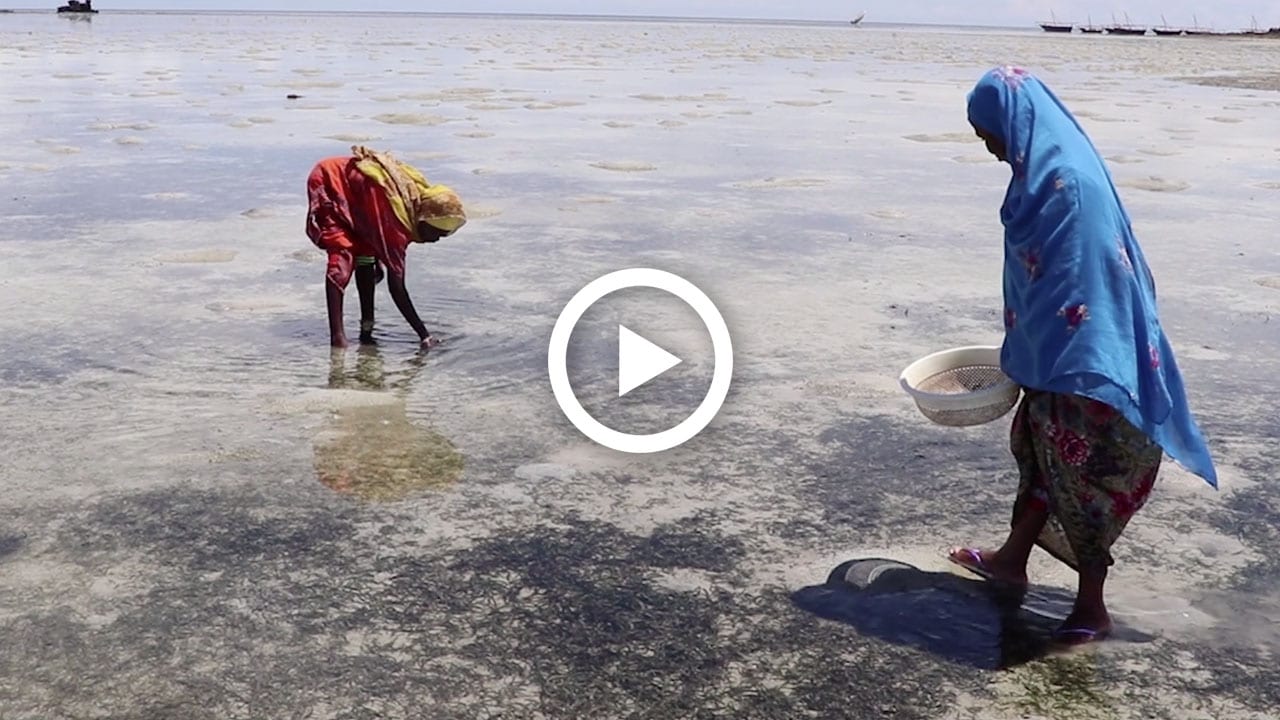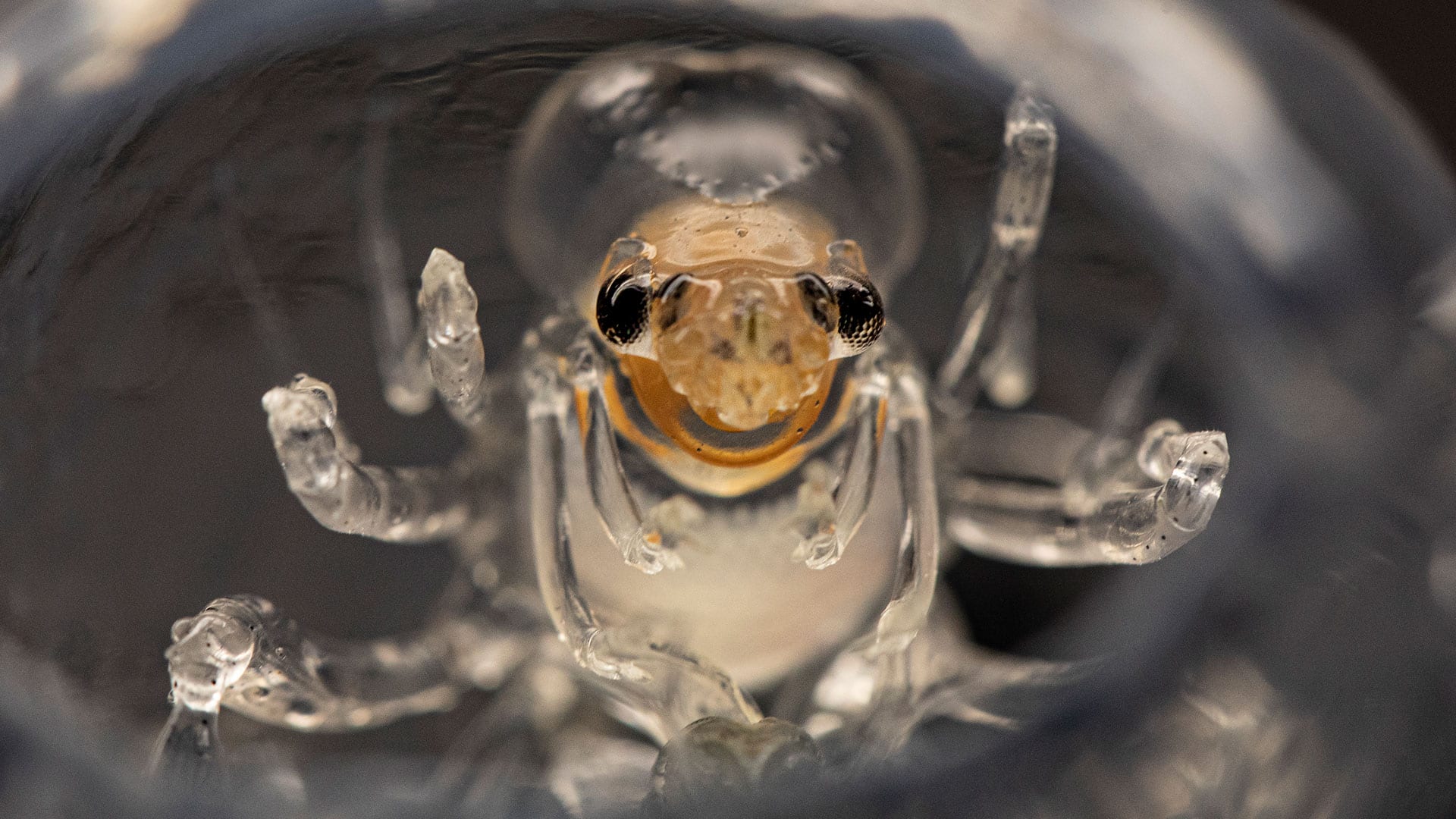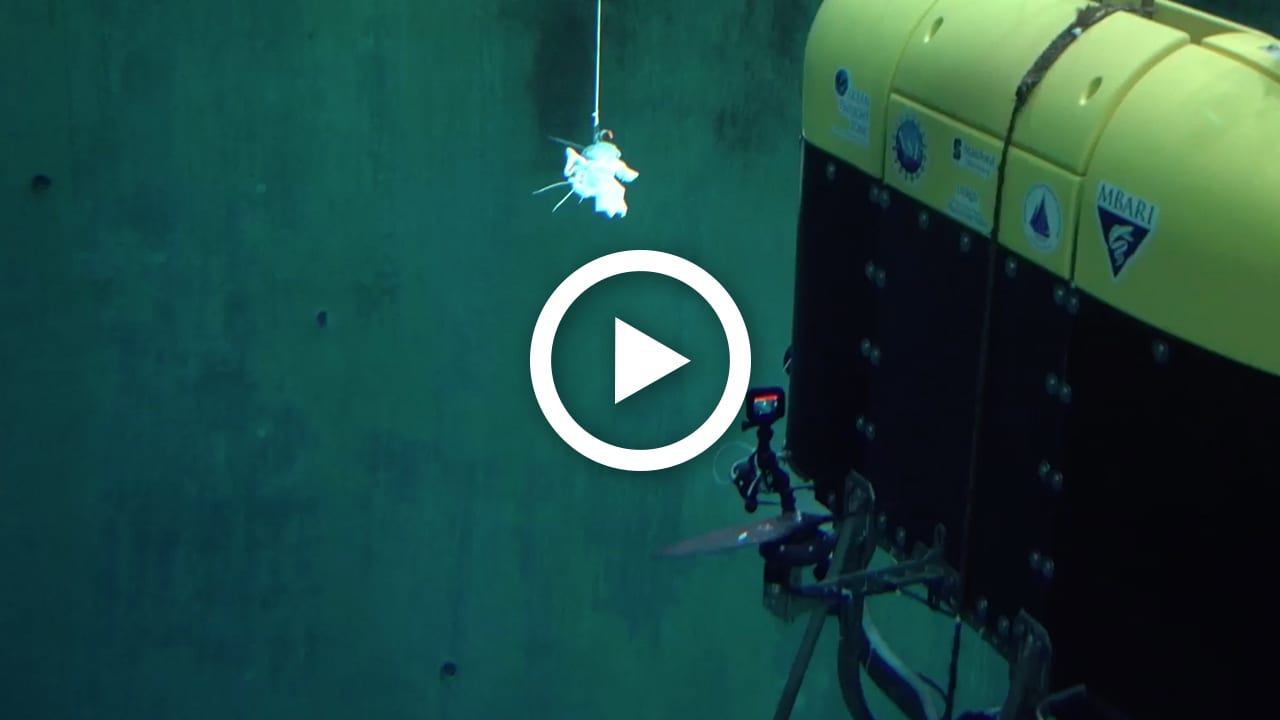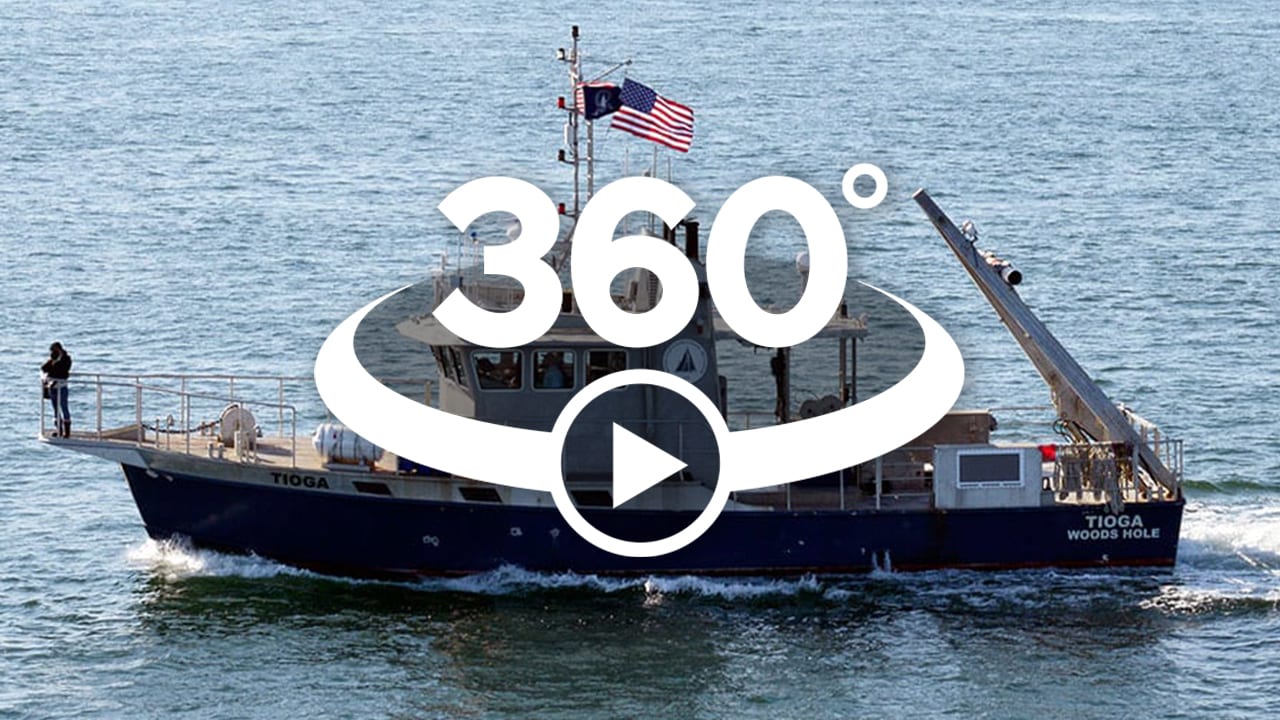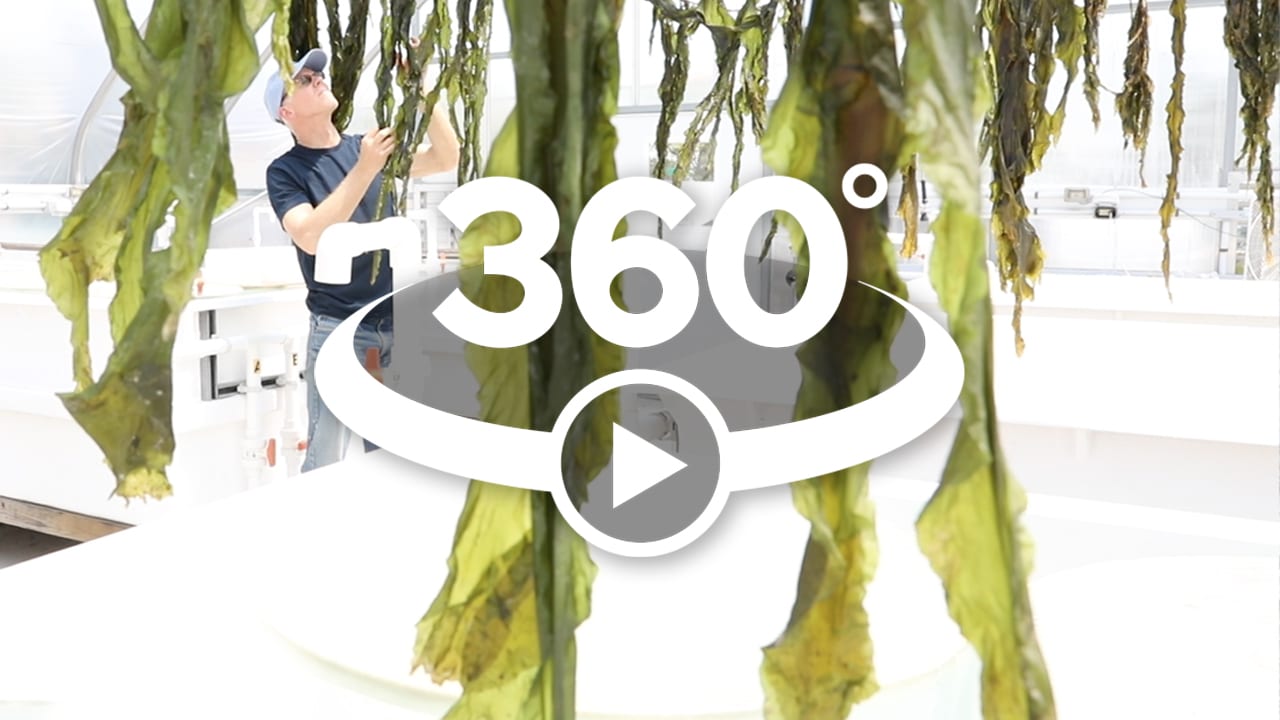Multimedia Items
Discover Octopus Garden
Watch this amazing footage and learn some cool facts about octopus living two miles below the ocean’s surface, where thousands of mother octopuses were discovered nursing their eggs in a place known as Octopus Garden in Monterey Bay National Marine Sanctuary (MBNMS).
Read MoreObserving Mooring Deployment at Pioneer Array
Logan Johnsen, chief mate on the research vessel Neil Armstrong, stood watch on the bridge recently during a mooring deployment at the Ocean Observatories Initiative (OOI) Pioneer Array. Instruments on the array record physical, chemical, and biological data from the seafloor to the surface and above around the clock, 365 days a year. Twice each year, a team from WHOI visits the Pioneer site, located about 100 miles south of Marthas Vineyard, to replace all of the moorings in the array and to deploy autonomous underwater vehicles that record data further afield.
Read MoreOrpheus explores the ocean’s greatest depths
Orpheus, an autonomous underwater vehicle (AUV) developed by WHOI, begins its descent into Veatch Canyon on the continental shelf off of the U.S. Northeast during one of several dives from the R/V Neil Armstrong in September 2019.
Read MoreThree things you may not know about sea level rise
Since the turn of the 20th century, seas have risen six to eight inches globally. New technologies, along with a better understanding of how the oceans, ice sheets, and other components of climate interact, have helped scientists identify the factors that contribute to sea level rise.
Read MoreCamp Harbor View Whale Watch
In August, WHOI participated in a whale watching trip for 85 Leaders-in-Training, ages 15 to 17, from Camp Harbor View, an organization that provides unique experiences for underserved youth in […]
Read MoreBasking sharks filmed by an AUV for the first time
Three things you may not know about basking sharks:
1. The basking shark is the 2nd largest fish in the ocean.
2. While it’s gaping mouth can fit a human, it filter feeds on tiny plankton.
3. WHOI’s SharkCam captured the first Autonomous Underwater Vehicle (AUV) footage of basking sharks.
Learn more here: go.whoi.edu/basking-sharkcam
Minion robots in the Ocean Twilight Zone
Phytoplankton use sunlight and carbon dioxide to grow, forming the base of the ocean food web. Phytoplankton are eaten by zooplankton, which are eaten by other animals. Dead zooplankton and other particles become marine snow drifting in the ocean, but how much marine snow sinks below the sun-lit ocean surface? Scientists are developing a new device
that will follow marine snow into the ocean’s twilight zone.
The MINION is a small (2 Liters) inexpensive instrument. It is equipped with… cameras, seawater sensors, acoustic recorder, ballast weight. Once deployed, MINION will sink to the twilight zone and drift with currents.
Cameras on the side record the rate and quantity of particles falling through the ocean. Falling particles also accumulate on a clear glass panel. A camera on top will record the particle type and accumulation rate.
Similar images have revealed the twilight zone is a perpetual snowstorm, of organic debris. Particles such as this fecal pellet from a jellyfish-like salp are extremely carbon-rich. Pellets like this will sink quickly to deeper waters, or even become buried in the seafloor. Any marine snow that reaches the deep ocean means less carbon in the atmosphere.
The MINION is designed to listen for underwater sound sources. This will determine their location as they drift.
After a MINION has finished its mission, it will release weight and float to the surface. At the surface, it sends a homing signal so it can be recovered. The next generation of MINION will send compressed data-sets via satellite. Allowing them to be deployed by the dozens. Data from MINIONS will help scientists learn more about the ocean’s role in Earth’s climate system.
Read MoreCreatures of the Ocean Twilight Zone
The ocean twilight zone is home to innumerable mysterious creatures. Most of them are very small. Some glow in the dark. Others are just plain bizarre. They all play an important role in maintaining the health of this complex ecosystem. An ecosystem we are only beginning to understand.
This was part of a mission in spring of 2019 where several members of the OTZ Project team conducted an expedition aboard OceanX’s research vessel, the M/V Alucia, out of the Bahamas. The main goal of the expedition was to examine how the OTZ project site off the coast of New England differs from this distant –yet connected– region of the twilight zone. The team worked closely with OceanX to share their journey through video diaries and photographs of the extraordinary creatures brought on board throughout the cruise. The Ocean Twilight Zone is supported by the Audacious Project, a collaborative endeavor, housed at TED, to surface and fund ideas with the potential to create change at thrilling scale.
Video by Erik Olsen
Read MoreCarbon Dioxide, Shell Building, and Ocean Acidification
To build shells and skeletons, marine organisms, such as this hypothetical clam, extract calcium ions and carbonate ions from seawater, combining them into solid crystals of calcium carbonate that are laid down to make shells.
Read MoreWhat’s it like in a submersible?
It is hard to describe what it’s like to physically travel down to the twilight zone. Both Heidi Sosik, senior scientist at Woods Hole Oceanographic Institution and Ocean Twilight Zone (OTZ) project lead and Joel Llopiz, Associate Scientist, and OTZ lead of the life histories and behavior theme went down in a submersible for the first time to experience the twilight zone. They were able to able to observe beautiful jellies and small fishes like bristlemouths, hatchetfish, and lanternfish, all in their natural habitat.
This was part of a mission in spring of 2019 where several members of the OTZ Project team conducted an expedition aboard OceanX’s research vessel, the M/V Alucia, out of the Bahamas. The main goal of the expedition was to examine how the OTZ project site off the coast of New England differs from this distant –yet connected– region of the twilight zone. The team worked closely with OceanX to share their journey through video diaries and photographs of the extraordinary creatures brought on board throughout the cruise. The Ocean Twilight Zone is supported the Audacious Project, a collaborative endeavor, housed at TED, to surface and fund ideas with the potential to create change at thrilling scale.
Read MoreWhat is the story behind Mesobot?
Mesobot is designed to let scientists observe the twilight zone by autonomously tracking individual animals for hours or even days without disturbing the environment or disrupting their behavior, making it possible to follow individual animals as they take part in the great migration from the twilight zone to the surface and back each day. Mesobot is also equipped with samplers that will allow it to capture traces of environmental DNA (eDNA) from seawater while on a dive. The engineering team held their first successful at-sea test in June of 2019.
Read MoreSelective breeding seaweed
Using a mix of rulers, calipers, and measuring tapes, a dozen scientists—an aquaculture geek squad of sorts—are sizing up thousands of individual kelp blades recently harvested from offshore seaweed farms in New England in order to find the best specimens for selective breeding. It’s a long, exacting process, but for WHOI scientist Scott Lindell, it’s a key step toward turning the ocean crop into a global energy source for the future. The work will enable scientists to breed better kelp—strains that can tolerate the harsh offshore conditions in which they’re grown. The U.S. Department of Energy’s (DOE) Advanced Research Projects Agency-Energy (ARPA-E) is funding the research, as part of a broader effort aimed at advancing the mass production of seaweed for biofuels. The idea is simple: Grow kelp on a large scale in offshore farms and turn it into biofuels that could one day power millions of homes and cars.
Read MoreDiscovering the Ocean Twilight Zone with Joel Llopiz
Most life forms in the twilight zone are tiny—a few inches or less—but even the smallest twilight zone inhabitants are powerful through sheer number. Joel Llopiz, Associate Scientist at the Woods Hole Oceanographic Institution, is part of the Ocean Twilight Zone (OTZ) project. The project is embarking on a bold new journey to explore one of our planet’s hidden frontiers—the ocean twilight zone, a vast, globe-spanning, and dimly lit region between about 200 and 1,000 meters beneath the ocean’s surface. Understanding of the twilight zone is currently limited by its enormous size and lack of easy access.
Several members of the OTZ project team conducted an expedition aboard OceanX’s research vessel, the M/V Alucia, out of the Bahamas in spring of 2019. The main goal of the expedition was to examine how the OTZ project site off the coast of New England differs from this distant –yet connected– region of the twilight zone. Going to different areas is critical to help us understand how abundance and types of organisms change geographically. Even from onboard observations, it was clear that this area has far fewer organisms than off the more nutrient-rich waters of New England. The team worked closely with OceanX to share their journey through video diaries and photographs of the extraordinary creatures brought on board throughout the cruise.
The Ocean Twilight Zone is supported the Audacious Project, a collaborative endeavor, housed at TED, to surface and fund ideas with the potential to create change at thrilling scale.
Read MoreConducting airlift and dive operations
May 2019 — Captain Peter Collins explains a day of support operations conducted aboard the R/V Tioga at the Martha’s Vineyard Coastal Observatory (MVCO). Helicopter operations included the airlift installation of a new dive board platform and switchgear for the MVCO tower. Dive operations included node junction surveying and a scientific instrument recovery at the Tower.
Learn more about the MVCO here:
https://www.whoi.edu/mvco
Entering the Ocean Twilight Zone with Heidi Sosik
It is hard to describe what it’s like to physically travel down to the twilight zone. In addition to extraordinary bioluminescence, Heidi Sosik, senior scientist at Woods Hole Oceanographic Institution and Ocean Twilight Zone (OTZ) project lead, was able to observe beautiful jellies and small fishes like bristlemouths, hatchet fish, and lanternfish, all in their natural habitat.
Several members of the OTZ Project team conducted an expedition aboard OceanX’s research vessel, the M/V Alucia, out of the Bahamas in spring of 2019. The main goal of the expedition was to examine how the OTZ project site off the coast of New England differs from this distant –yet connected– region of the twilight zone. Scientists conducted net tows to collect animals at specific depths within the twilight zone and went down in a manned submersible to observe life there. They also collected water samples for environmental DNA analysis, a kind of forensic tool that allows scientists to sleuth out organisms the scientists weren’t able to physically catch. The team worked closely with OceanX to share their journey through video diaries and photographs of the extraordinary creatures brought on board throughout the cruise.
The Ocean Twilight Zone is supported the Audacious Project, a collaborative endeavor, housed at TED, to surface and fund ideas with the potential to create change at thrilling scale.
Read MoreWhat do ocean airlift operations look like?
Watch how scientific instruments get airlifted and installed at the Martha’s Vineyard Coastal Observatory. The installation includes a new dive board platform and electrical switchgear.
Learn more about the MVCO here:
https://www.whoi.edu/mvco
Meet an Ocean Twilight Zone photographer
Fish ecologist, Paul Caiger explains how he brings together his passion for the Ocean Twilight Zone and photography to shed light on one of the least known regions on the planet. This was part of a mission in spring of 2019 where several members of the OTZ Project team conducted an expedition aboard OceanX’s research vessel, the M/V Alucia, out of the Bahamas. The main goal of the expedition was to examine how the OTZ project site off the coast of New England differs from this distant –yet connected– region of the twilight zone. The team worked closely with OceanX to share their journey through video diaries and photographs of the extraordinary creatures brought on board throughout the cruise. The Ocean Twilight Zone is supported by the Audacious Project, a collaborative endeavor, housed at TED, to surface and fund ideas with the potential to create change at thrilling scale.
Read MoreResearching the Twilight Zone
Meet WHOI technician, Helena McMonagle, and learn how research is conducted in the twilight zone using MOCNESS. This was part of a mission in spring of 2019 where several members of the OTZ Project team conducted an expedition aboard OceanX’s research vessel, the M/V Alucia, out of the Bahamas. The main goal of the expedition was to examine how the OTZ project site off the coast of New England differs from this distant –yet connected– region of the twilight zone. The team worked closely with OceanX to share their journey through video diaries and photographs of the extraordinary creatures brought on board throughout the cruise. The Ocean Twilight Zone is supported by the Audacious Project, a collaborative endeavor, housed at TED, to surface and fund ideas with the potential to create change at thrilling scale.
Read MoreBreaking Ice: Science at the Top of the World
Since 2003, the Beaufort Gyre Exploration Project at the Woods Hole Oceanographic Institution has given us an up-close look at one of the fastest-changing parts of the world. In 2018, the Ocean Media Institute at Montana State University sent Hugo Sindelar to join the annual expedition aboard the Canadian icebreaker Louis S. St. Laurent to see how the scientists and engineers involved in the project bring back their hard-earned data and to hear what they’ve learned so far.
Read MoreImproving lives in East Africa through shellfish aquaculture
Shellfish aquaculture in the coastal waters of East Africa holds great potential to provide a stable, healthy source of protein and as well as new economic opportunities for entire communities, so long as up-to-date knowledge and equipment are available. To date, however, very little shellfish aquaculture is practiced in Zanzibar because of a lack of shellfish hatcheries, which provide shellfish seed to farmers, and a lack of technical knowledge about how to best farm and manage shellfish stocks.
Contribute to ProjectWHOI on behalf of ProjectWHOI Zanzibar:
https://projectwhoi.whoi.edu/home/zanzibar
With the help of this ProjectWHOI fundraiser, Hauke Kite-Powell will be able to increase seed production capacity at the hatchery to about 10 million clam seed per year, which should translate into additional income of $100/year for several hundred shellfish farmers in Zanzibar, many of whom are women supporting families. Hauke will also be able to send staff from U.S. shellfish growing companies supporting this project to Zanzibar to help train hatchery staff and growers. Most importantly, it will support the training of the next generation of hatchery operators and lay the foundation for expanding shellfish aquaculture along the coast of Tanzania and other parts of East Africa.
The funds raised in this campaign will enable Hauke Kite-Powell to supply much-needed equipment to bring the training hatchery up to full capacity and to support the travel of US shellfish farm trainers who will volunteer their time to train local technicians at the hatchery in Zanzibar.
Read MoreFearsome Phronima
The fearsome phronima, a plankton species out of a monster movie riding inside the body of a salp. (Image by Paul Caiger, Woods Hole Oceanographic Institution)
Read MoreMesobot: Following life in the Twilight Zone
Mesobot is a brand new underwater vehicle designed to reveal what lives in the ocean’s twilight zone. Mesobot can follow animals as they move through the darkness and as they migrate from the depths to the surface and back. The twilight zone is vast and remote, but is threatened by unregulated fishing and climate change. We need Mesobot’s insights to understand and protect the twilight zone before humans change it forever.
Read More360˚ Video Time-lapse: Cruise aboard the Tioga
Ride on the bow of the Research Vessel Tioga as it departs the dock at Woods Hole Oceanographic Institution at 0530 on May 10, 2019 and heads down to the south side of Martha’s Vineyard to support helicopter and dive operations at the Marthas Vineyard Coastal Observatory.
Read More360˚ Video Time-lapse: Growing Better Biofuels
Check out what it takes to grow great seaweed! Take a 360 tour of WHOI’s Environmental Systems Laboratory as our researchers weigh, measure, and dry kelp from an experimental coastal farm to find out what characteristics could add up to an optimal crop for food, feed, and biofuels.
Read More
